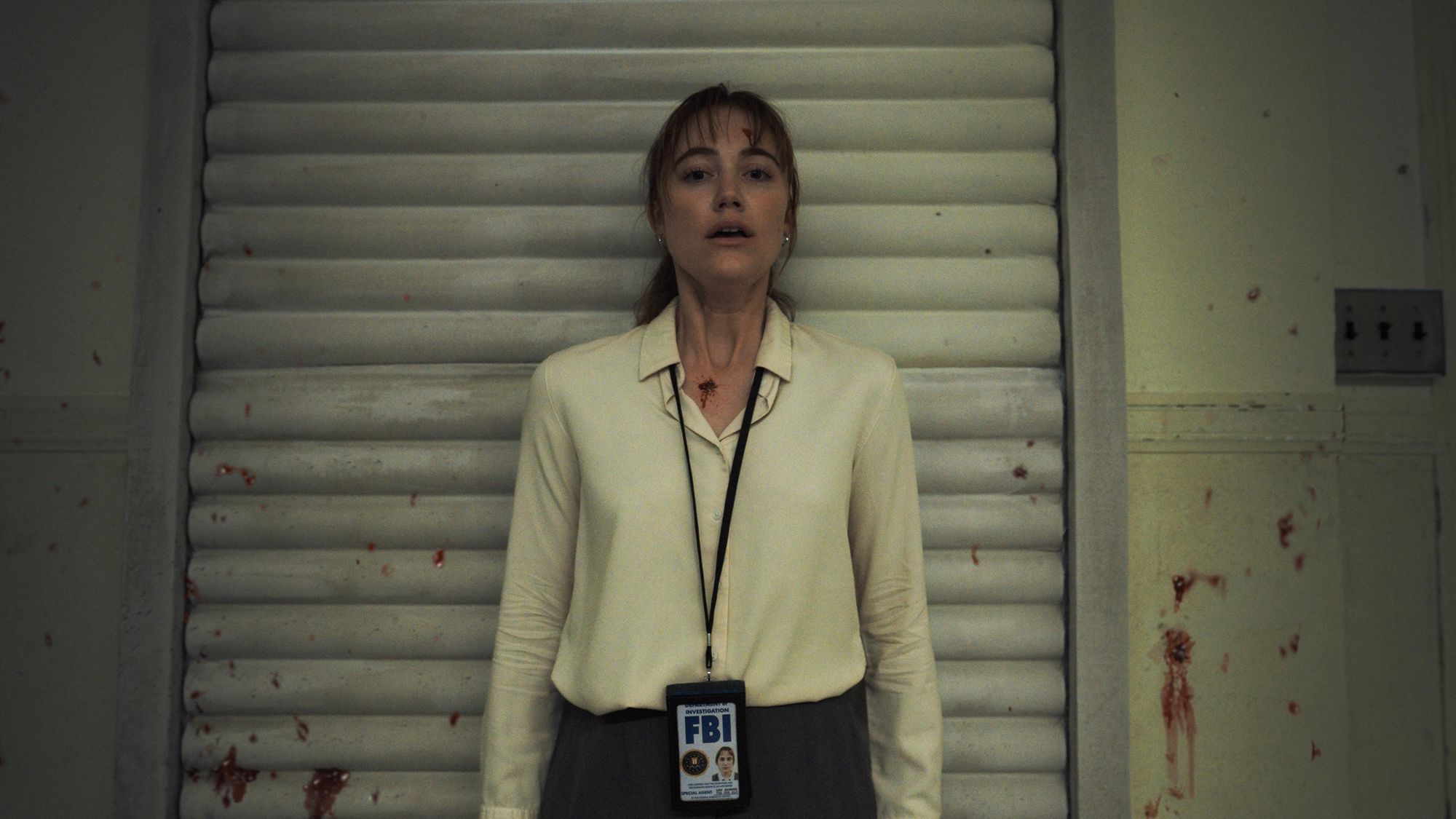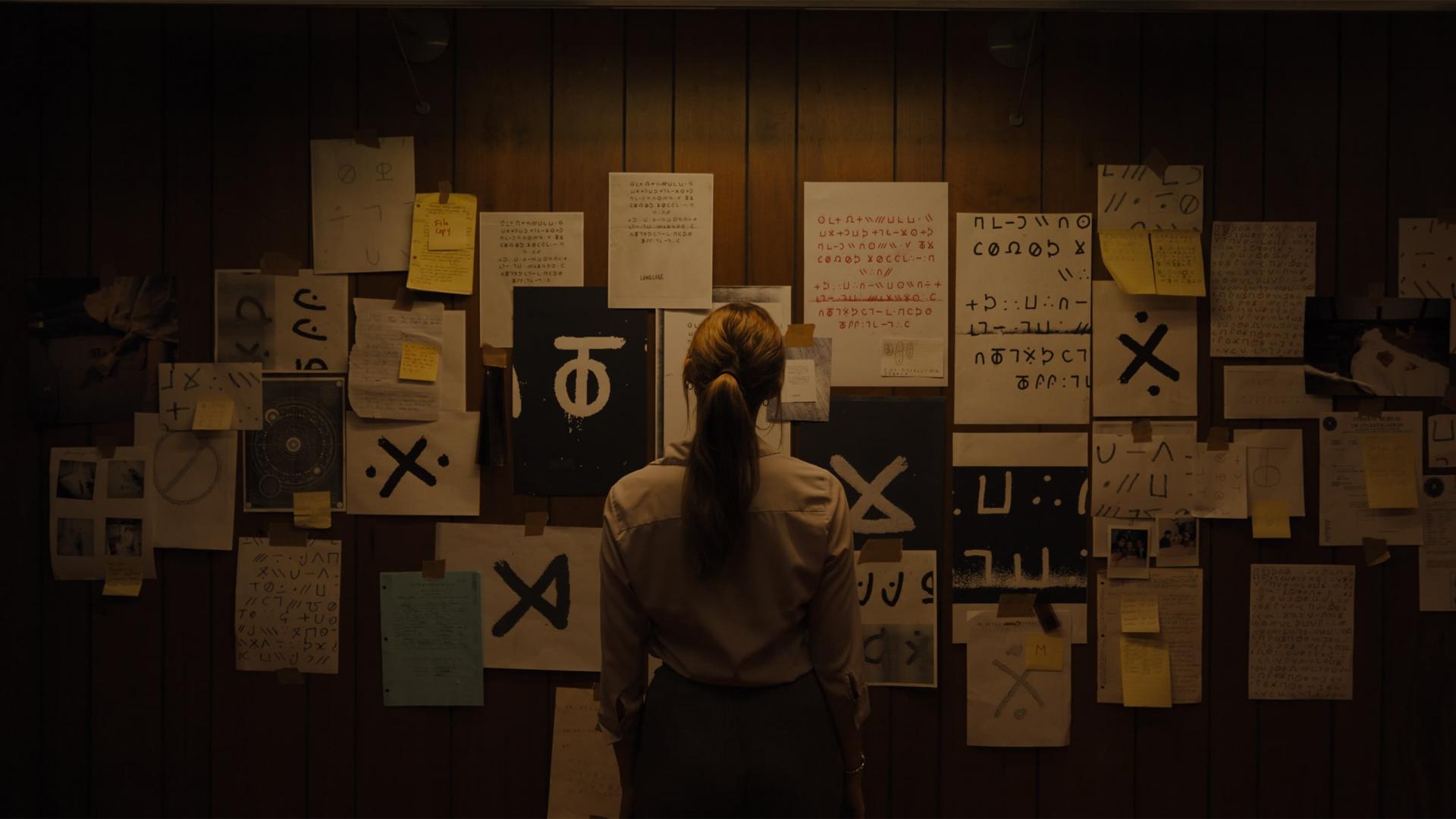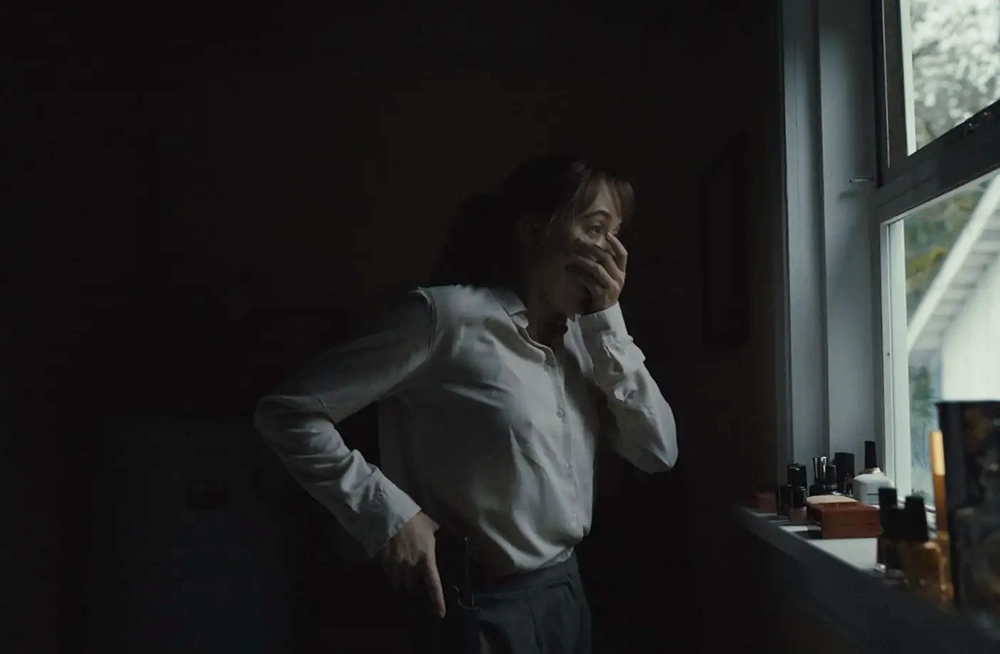In “Longlegs,” Osgood “Oz” Perkins crafts a bone-chilling and atmospheric experience that surpasses his previous work in all senses. This detective story, reminiscent of released in the ’90s in terms of narrative structure, has some predictable twists and turns. But this predictability doesn’t change the fact that the dread lurking in the shadows of each scenery will tap you on the shoulder like an ethereal happening. With great performances and haunting, showy imagery, “Longlegs” becomes more than the film it owes a debt to; Perkins’ latest is its own frightening beast.
Detective movies have been prevalent for many decades and seen from various perspectives. However, the films released in the 1990s defined their stature in pop culture. The two prominent examples are the Best Picture-winning “Silence of the Lambs” and David Fincher’s “Seven,” both covered in dread and curiosity to unravel the mystery behind the murders occurring in each story. The films blended the traditional format of detective pictures with the horror genre to ease the tension and enhance the atmosphere. You can say whatever you like about the two aforementioned pictures, but the best element that they have is that ever-evolving sense of unease that worries the viewer more and more until the case is closed. That is, if the characters manage to solve everything.
Even then, there is the chance that if the killer is found, there is no closure for them. This subjects the characters to wallow in the deep waters of the malign. That feeling that “Seven” and “Silence of the Lambs” had is sensed in Oz Perkins‘ latest and best work to date, “Longlegs”—a detective story that dabbles in and out of the supernatural and psychological to atmospheric success. The feature owes a debt to these films while still having its unique touch via Perkins’ visualization and knack for the ethereal. While a few quirks in its story prevent it from being in that culturally known staple of the aforementioned films, Perkins curates some ominous images that send chills down your spine. It works through your senses, like the evil in the story.
A Rookie Detective on the Hunt for a Hidden Killer
“Longlegs” begins with a short cold open. A young girl notices something strange outside her house. A car has been parked on the driveway. She does not see the driver anywhere. “Cuckoo!”, a man utters from afar, with the echo of his voice reverberating throughout the scenery and theater. He plays a one-sided game of hide-and-seek with the young girl. And after she walks a few steps, he appears. The man goes by the name of Longlegs (Nicolas Cage), whom we only see from the bottom lip, yet his pale face is immediately visible to the audience. It is a good move from Perkins to hide him early on. He only gives us a taste of the dominant and disturbing stature.
Longlegs reveals that he is a “friend of a friend.” We don’t know who or what he refers to, but the birthday present he gave the girl would worsen her life. After that introductory sequence, the film flashes forward a few years later. We now follow the story of a rookie FBI detective, Lee Harker (Maika Monroe), who has a unique gift. Harker has a specific psychic ability that helps her in her investigations. This character trait is not abused nor exaggerated to the point where the film loses itself within the supernatural. This ability does not define Harker. Instead, it enhances the character. It provides a deep insight into her psyche.

Another director would have made it a more prevailing plot point. But Perkins wisely shies away from it. He focuses on how it builds this character’s mental state rather than forcefully moving the story forward. Due to a revelation she made about her ability, Harker is assigned to the team trying to uncover the Longlegs’ murders. Detective Carter (Blair Underwood) trusts her “intuition” and vows to follow Harker’s lead regarding his investigation. But as Harker gets more tied up to this case, an underpinning sense of dread haunts her daily living. It feels like someone is patiently waiting for her to find all the clues. The film is shot in a way that makes the viewer think there is always a pair of eyes latched onto you.
Maika Monroe and Nicolas Cage Provie ‘Longlegs’ with Stunning Performances
This creates an uneasy sensation that is prevalent throughout the film’s duration. Whether it is a shot of the landscape or a close-up of the characters, there is always room for a mysterious figure to be present in the frame. Harker gets deeper and deeper into this rabbit hole Longlegs has constructed. The film does many powerful yet predictable twists and turns that show some hard truths about the city these characters inhabit and their headspace amidst all these tragedies. Harker does not want to reveal herself to the people helping with the case or the audience. She doesn’t know how to express what she is enduring in her head. The malign that has blurred her past has kept her silent.
Monroe excellently portrays this state of delusion and cloudiness with ease. She relies on the stillness and silence her character basks upon to make her discoveries even more traumatizing. She is a fascinating actress with eyes on intriguing and experimental pictures like “Watcher” and “It Follows.” Monroe uses the atmospheres of these films as a cloak her characters wear as a shield. On the other hand, we have Nicolas Cage, who tries to balance the ridiculous and the severe. Sometimes, he exaggerates the scenes, and we see the manic nature that people have grown to love. In others, Cage channels the dark state of Longlegs to churn out some bone-chilling monologues. While he could have toned it down a notch to give the film a more serious tone, his antics paved the way for a weirder state.
Throughout “Longlegs,” this persistent sensation of dread holds the viewer in a chokehold. Perkins always relies on “vibes” and atmosphere by creating hypnotizing images. But in his latest, he curates his most arresting ones yet. Even the most disposable image in the picture deepens the void. The director of “The Blackcoat’s Daughter” has been criticized for indulging in style over substance. A couple of sequences in “Longlegs” have little purpose and are just there to enhance the evil aura the film oozes. However, the great majority does have a proper fit with the narrative and Perkins’ vision. Even then, if they don’t do so, he has an eye for the atmospheric like not so many directors do.

The Intertwining Between the Psychological and Supernatural
While the imagery is striking and neatly shot by cinematographer Andres Arochi, the most fascinating element of “Longlegs” is the intertwining between the psychological and supernatural. This division provides the film with two perspectives, culminating with the exact thematic resolution and force. From the get-go, Perkins shows the audience this story might have a supernatural element. However, the characters do not embrace this nature of the narrative in its totality. They look at it as the acts of a man who wants to harm, which does not involve Satanism, black magic, or voodoo. Perkins plays with this notion. Some sequences cause some doubt and tether between the two. But you can see the film from either of these angles.
If you go through the supernatural route, “Longlegs” shows how evil works like its own entity that manipulates the minds of the disreputable and pure. Meanwhile, on the more grounded side, you see the realization of a woman remembering the horrors that surround her past and continue to haunt her in the present–passed onto her by relatives or consumed individually by first-hand traumatic experiences. In the grand scheme of things, the film sees evil as a banal force of will. The bane of Longlegs’ work makes the city seem covered in a cloud of melancholy. Even though these tragedies are gruesome, everything seems forgotten about. This is seen in a scene where the detectives find another one of the killer’s victims, who has been lying in a house for an entire month. The overly expository ending hinders the experience a bit.
Instead of relying on ambiguity, Perkins thoroughly explains the film’s syntax and main reveal. This is unnecessary since the pivotal interrogation scene explains much of what will transpire later. This decision to have a talkative conclusion seems forced for a movie that relies on ambiance. Nevertheless, “Longlegs” maintains its force intact due to the great work all around. There haven’t been that many horror pictures this year that entice and mesmerize the same way as Perkins’ latest does. And so this one stands out not only because of its but also due to the rework of a genre that has remained somewhat stale within mainstream media. Of course, “Longlegs” borrows from its predecessors because, at this point, treading the same waters as “Silence of the Lambs” and “Seven” is inescapable. But the beauty behind the movie is how the crew constructs its malign nature.

“Longlegs” hit theaters across the U.S. on July 12th, 2024.


